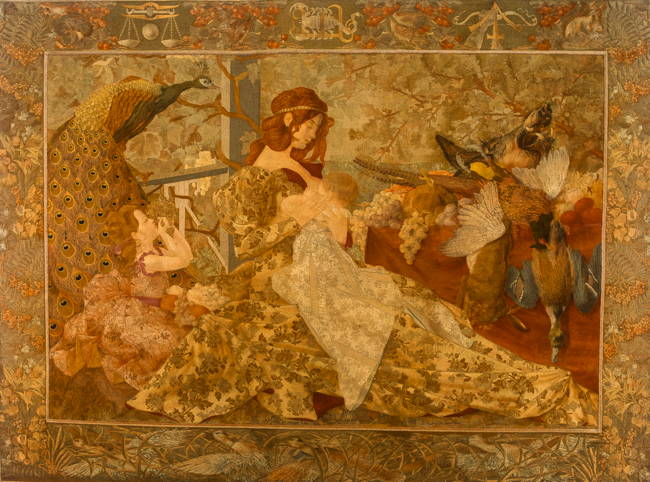“Women can only paint things that require no deep thought, no great feelings, no great virtuosity. Flowers, still lives, elegant objects, peaceful genre scenes, soft landscapes, children’s portraits, docile animals”: that is what an article dedicated in 1884 to “Belgian female painters” in the avant-garde magazine, L’Art moderne had to say on the subject. In spite of these largely sexist prejudices, there were many, audacious Belgian female artists in the XIXth century. Some of them enjoyed true recognition through exhibitions and commissions. But very few of them went down in posterity. The exhibition presented at the Félicien Rops museum tries to pay a deserved tribute to these female artists.
Women were considered above all as wives, mothers and housekeepers and only had access to any form of artistic education recognized as such as of the 1880s, in particular after painter E.-S. Blanc-Garin opened a private academy in Brussels in 1883. Official Belgian academies remained closed to women until 1889. Many had a very hard time ascertaining themselves as artists.
To be “the daughter of” or “the wife of” allowed some of them to step out of the dark. It was the case of Rops’ daughter, Claire Duluc (married to E. Demolder) who illustrated her husband’s works under a male pseudonym; of Gabrielle Canivet (married to C. Montald) who did fine book binding; of Juliette Massin (married to W. Degouve de Nuncques) who painted bright landscapes. We must remember to mention Georgette Meunier, Louise Lemonnier and Anna Boch (a cousin of O. Maus), female member of the “cercle des XX”, of whom E. Verhaeren would write that “not with-standing her excellent qualities, the artist lacks the quality of being a man” (1884).
“Not having a brother, male cousin, uncle nor father who is a painter, I have to brace myself with courage”, Louise Héger wrote from Paris. Indeed she had gone there in 1884 to learn to paint. Women who had no artistic relations among their family members of that of their potential spouses often chose not to marry as they were determined to dedicate themselves to their career. Such was the case of Marie Collart, Cécile Douard or Jenny Montigny who are currently considered “free spirits”.
Female artists of the XIXth century illustrate themselves in different disciplines, such as painting, engraving, sculpture or decorative arts, and in such varied styles as Realism, Impressionism or Art Nouveau. The aim of the exhibition is to reflect this array of means of expression and of style. It presents the works of more than 40 female artists, on loan from museums and private collections.
• CATALOGUE
Directed by Denis Laoureux, 148 p., 100 ill., Silvana Editoriale, Milano, €25
| 








